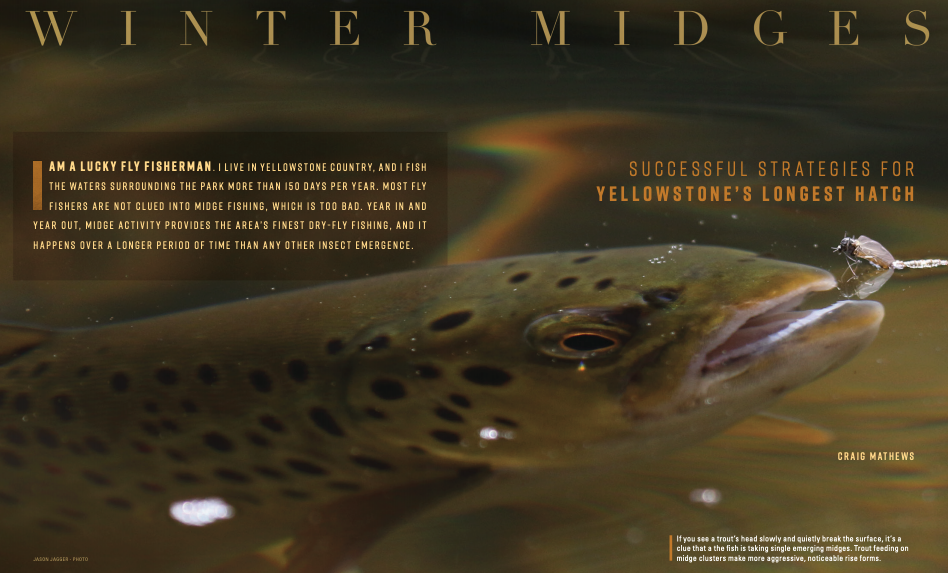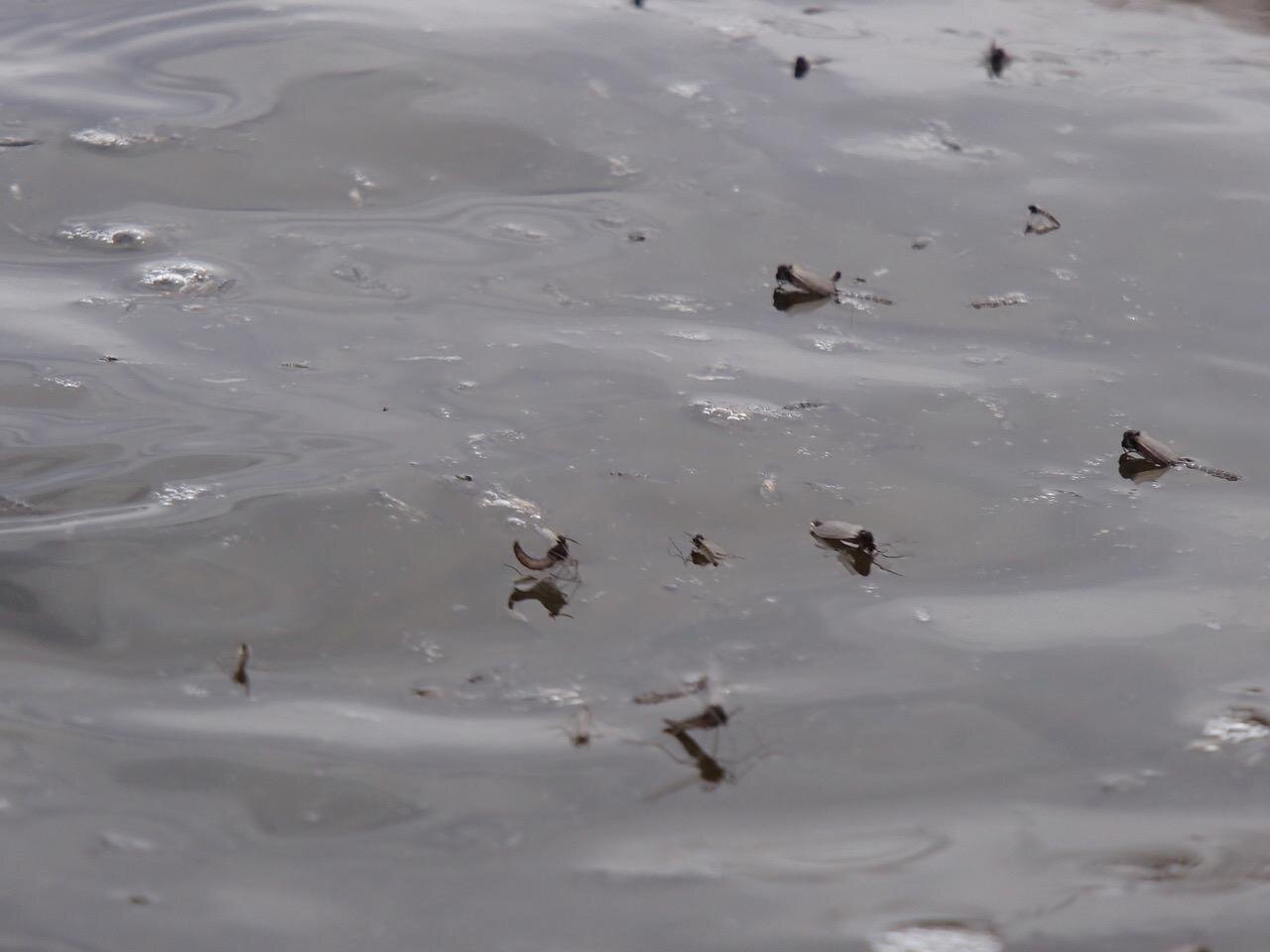I am always patient and extra careful, slowly approach trout rising to midges. I won’t wade if possible. A wading wave sent upstream to risers will certainly put fish on alert, they might cease rising for the day. I get close to rising fish, sometimes within a rod length away, and allow several confidence rises before my first presentation. This lets me observe what side of its mouth the fish is rising to midges and if the fish is rising to individual emerging midges or clusters of several mating midges.
I knot on fresh tippet to my 9’ 4x leader, usually 3-4 feet of 5.5 or 6x Trout Hunter tippet. If fish are coming up for single midge emergers I’ll present an Improved Zelon or Scotty’s Midge, the size dependent on the size of the naturals, usually #20-24. Midges are susceptible to emergence difficulties in winter and fish rising to them key on emerging insects trapped in their pupal shucks, hence a pattern with a trailing shuck is necessary for success.
If fish are coming up for midge clusters I will determine the size of cluster they prefer. Simply by observing the clusters rolling through the narrow feeding lanes big rising trout use to feed in I can see whether a fish prefers a small cluster, say a size #20 comprised of a few midges, or a larger cluster #14-16 comprised of dozens of individual midges. Large fish prefer certain size midge clusters, whether a #14 or a #20. It can make the difference between catching a couple good trout, or several good fish in an hour or two of midge activity.
I made the comment 2 paragraphs above about determining what side of its mouth the fish is rising with to take midges. This is important since larger fish might only allow one cast before going down, big fish can be that tough. Most fish are left or right mouthed, this can be seen by examining hooking scars of individual trout therefore the importance of presenting a cast to the side of the fish it is rising to midges from. Now I’m close to the rising fish, usually within 12 feet, and have figured out what midge pattern to present. I’ve knotted on fresh tippet and a fly.
I usually fish from my knees on knee-padded Patagonia waders. I determine the trout is rising from its left side to intercept the naturals. I’m downstream of the fish so I present a pinpoint accurate cast on a short line about 2 feet upstream of the rising fish and within 6 inches of its left side. I hold my breath as the #22 Scotty’s Midge approaches the big fish. I can see it slide over, head completely out of the water in a classic midge rise, and intercept my offering. I raise my rod, the only audience I have is a couple mallard ducks that take flight when the fat 16” rainbow leaps out of the water and runs downstream.


















